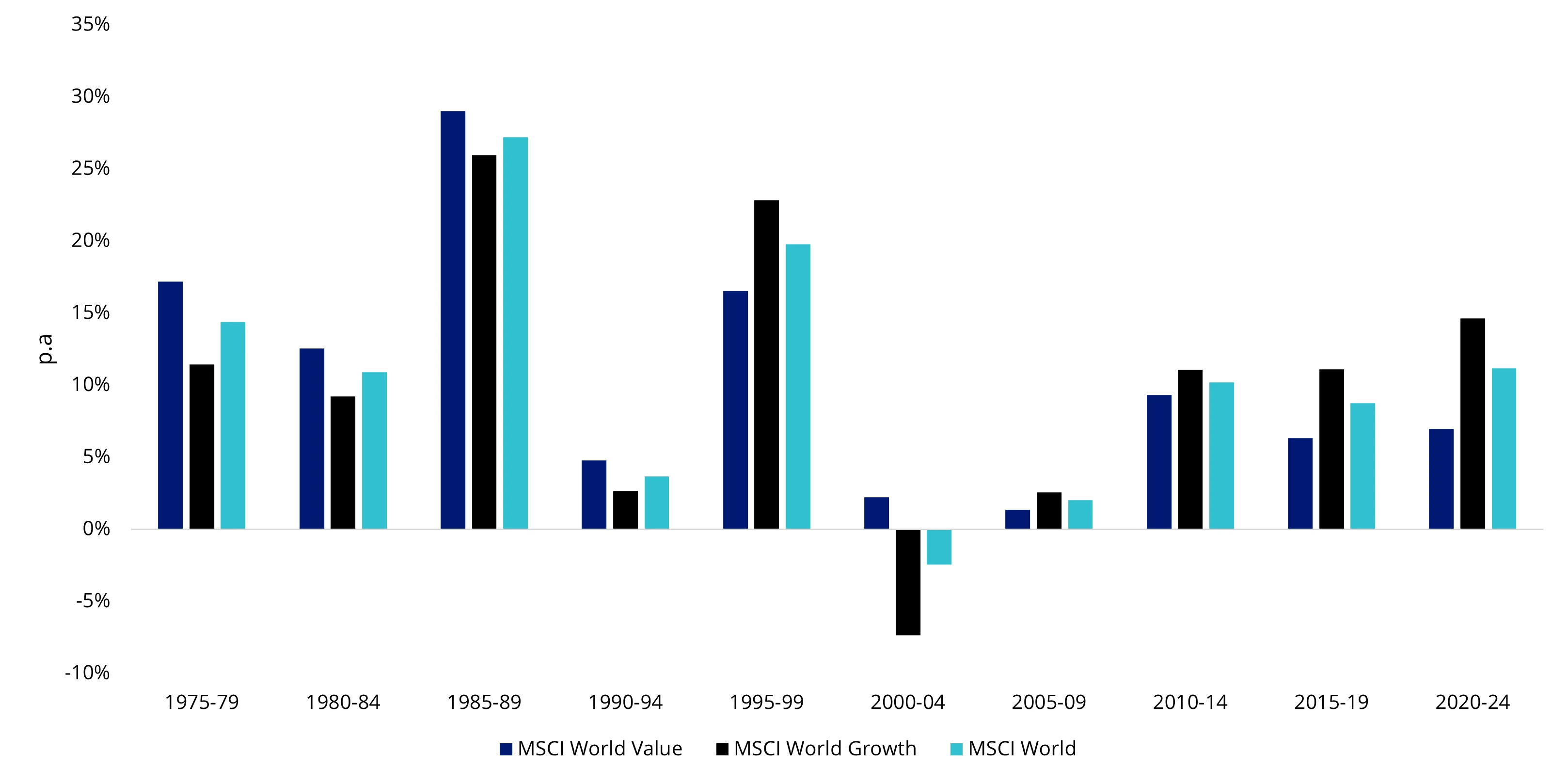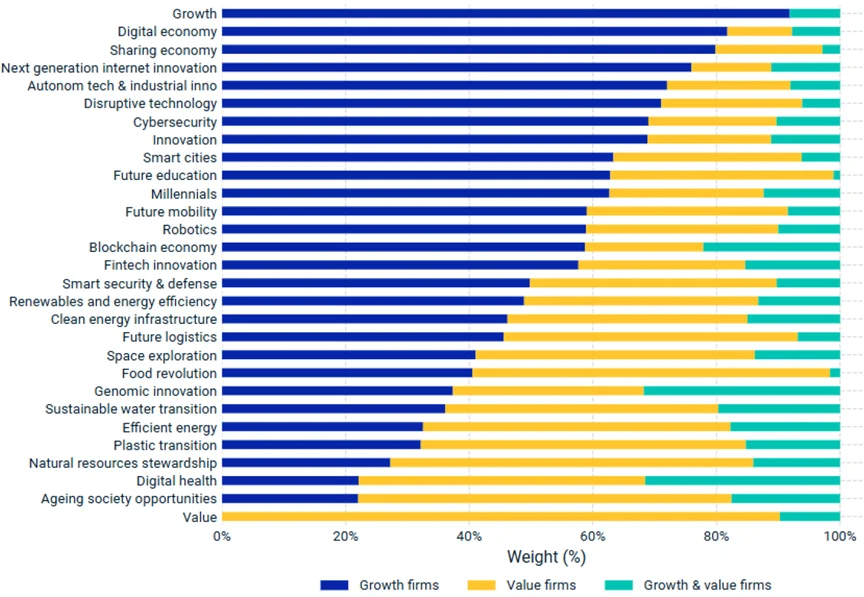Assessing the fuel for portfolio growth
Growth investing is a well-known strategy in active management, but it is also a strategy associated with high volatility.
Active growth managers can turbo-charge the returns of a portfolio one year, only to weigh a portfolio down in another. Growth, we think, is an important factor in equity investing – you just need to make sure you know what makes your engine run. Growth investing has historically been incorrectly considered the opposite of value investing.
That started to change in 1992 when Warren Buffett wrote in his letter to shareholders when discussing his observation that most analysts feel they must choose between two approaches customarily thought to be in opposition: "value" and "growth.”
Buffett said, “In our opinion, the two approaches are joined at the hip: growth is always a component in the calculation of value…”1
This was five years after ‘Black Monday’. In the years immediately after the stock market crash, value managers did well, but growth managers had been staging a comeback. Growth had gained notoriety among active managers, perhaps most famously by Peter Lynch, throughout the late 1970s and 1980s.
The growth factor
According to a recent MSCI paper, “The roots of growth investing can be traced back to early 20th century investors who focused on companies with strong earnings potential and reinvestment prospects.”2
Like other investment style factors, the growth factor has been associated with various identifiable and measurable company characteristics. These have been analysed and tested by academics and financial industry practitioners. This includes assessing a combination of forward and historical earnings and sales growth, as well as identifying companies with sustainable competitive advantages.
Growth since the GFC
Growth has been a hot topic among international equity investors since the GFC, as ‘growth’ companies outperformed ‘value’ companies after many decades of underperformance.
Chart 1: Since the GFC, growth has outperformed value

Source: Bloomberg. You cannot invest in an index. Past performance is not indicative of future performance.
Traditionally, ‘growth’ investing has been the domain of active managers.
Investing with a skilful ‘growth’ active manager, who is selective and curates their portfolio, has been rewarding for investors, irrespective of the era. As noted earlier, investor Peter Lynch was associated with growth investing, and his US mutual fund outperformed during the 1980s when, in the chart above, value outperformed.
Growth investing focuses on identifying companies poised for rapid revenue and earnings expansion, often driven by innovation, market disruption or evolving consumer preferences. You can see in the chart above, it had a run into the dotcom crash.
Growth is associated with technological shifts and changes.
Fast forward to today and growth and its performance are now closely intertwined with trends such as AI, the digital economy. MSCI recently highlighted the domination of growth companies within the technology and innovation themes of its thematic index series.3
Chart 2: Growth firms dominate MSCI’s technology and innovation themes

Source: MSCI, data as at 30 May 2025. The chart shows the overlap between MSCI Thematic Indexed and MSCI Value and Growth style indices.
Gaining exposure to growth
Traditionally, there has only been one way for everyday investors to gain exposure to a ‘growth’ portfolio: high-fee active funds focused on identifying ‘growth’ opportunities.
However, we think that it is possible to access the growth factor utilising a systematic, rules-based approach that targets outperformance for a fraction of the costs of the typical active management fee.
Active management provides the key: selectivity.
VanEck has a distinguished history of harnessing technological advancement and advanced analysis to identify and unlock opportunities for Australian investors. For over a decade, we have pioneered smart beta ETF strategies in Australia, with a vast number of our smart beta ETFs being the first of their kind on the ASX, offering investors the ability to construct portfolios with a targeted outcome in mind.
It is with this mindset that we contemplated the growth factor and a selective, systematic approach.
The result is the VanEck MSCI International Growth ETF, which will soon be listed on the ASX under the ticker ‘GWTH’.
The new ETF will track the MSCI World ex Australia Growth Select Index.
GWTH will invest in around 100 international companies that have been selected, according to MSCI, as being among the top companies based on:
- Long-term forward earnings-per-share (EPS) growth rate
- Short-term forward EPS growth rate
- Current internal growth rate
- Long-term historical EPS growth trend
- Long-term historical sales-per-share growth trend
GWTH is an ETF that will allow investors to add a growth tilt to their portfolio, for passive fees. Importantly, it could be a diversifier to the growth factor away from the over-held companies, because NVIDIA is currently the only ‘Magnificent-7’ company included in the index.
Growth investing has come a long way since the late 70s when Peter Lynch was starting his fund, but the underlying principles remain the same:
Successful growth investors emphasise:
- Strong historical and future earnings growth
- Competitive advantage through innovation or market leadership
- Sustainable long-term growth trends rather than short-term valuations.
Exposure to the growth factor can turbocharge your portfolio, but it can also weigh it down. It’s worth understanding the fundamentals, and companies, that will make it move.
To find out more and register your interest in GWTH click here.
Sources
1Berkshire Hathaway Inc, Chairman’s Letter - 1992
2MSCI , Factor Investing Through the Decades, July 2025
3ibid
Published: 15 August 2025
IMPORTANT INFORMATION
VanEck Investments Limited ACN 146 596 116 AFSL 416755 (‘VanEck’) is the responsible entity of VanEck MSCI International Growth ETF (‘GWTH’). Units in GWTH are not currently available. GWTH has been registered by ASIC and VanEck has lodged an application with ASX for units in the fund to be admitted to trading status on ASX. The PDS has been lodged with ASIC and it will be available at the end of the exposure period at www.vaneck.com.au. This is general advice only, not personal financial advice, and does not take into account any person’s individual objectives, financial situation or needs. GWTH is subject to investment risk, including possible loss of capital invested. No member of the VanEck group guarantees the repayment of capital, the payment of income, performance, or any particular rate of return from the fund. GWTH will invest in international markets which have specific risks that are in addition to the typical risks associated with investing in the Australian market. These include foreign currency, ASX trading time differences, country or sector concentration, political, regulatory and tax risks. The PDS and TMD details the key risks. This information is believed to be accurate at the time of compilation but is subject to change. VanEck does not represent or warrant the quality, accuracy, reliability, timeliness or completeness of the information. To the extent permitted by law, VanEck does not accept any liability (whether arising in contract, tort, negligence or otherwise) for any error or omission in the information or for any loss or damage (whether direct, indirect, consequential or otherwise) suffered by any recipient of the information, acting in reliance on it.
GWTH is indexed to a MSCI index. GWTH is not sponsored, endorsed or promoted by MSCI, and MSCI bears no liability with respect to GWTH or the MSCI World ex Australia Growth Select Index. The PDS contains a more detailed description of the limited relationship MSCI has with VanEck and GWTH.




